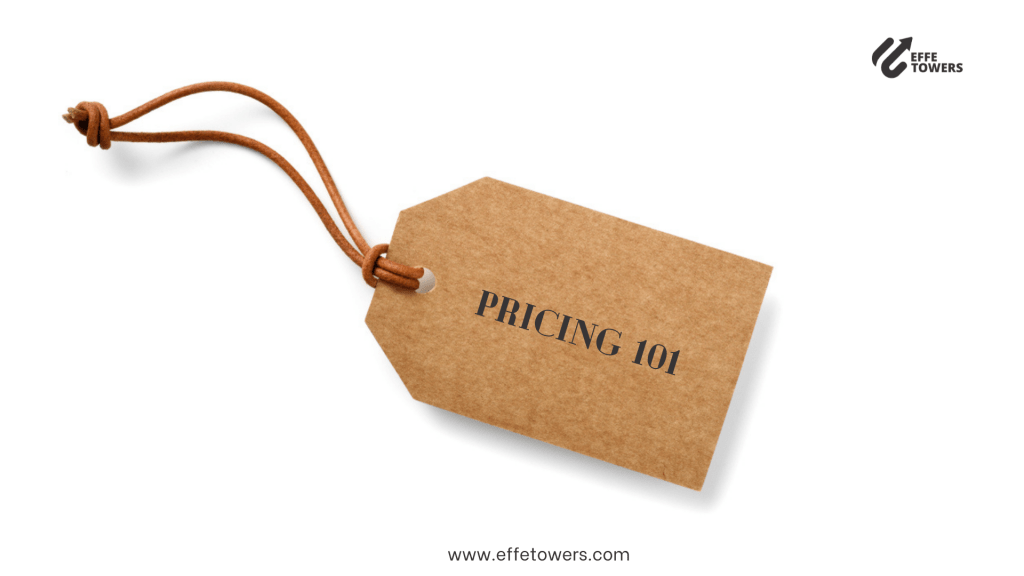Pricing is perhaps one of the most difficult challenges faced by many entrepreneurs. It is one aspect of every business that plays a very definitive role with the potential to bring about growth or the collapse of any business.
What is Pricing?
Pricing refers to the decision-making process that goes into establishing a value for a product or service. It is a common term often used in economics and finance, it describes how much you are willing to give out a product or service and how much the customer is willing to buy.
Although often used interchangeably with cost, these are two different concepts, while pricing establishes the value you place on a product or service for customers to buy, cost refers to your investment in the product or service that’s being sold.
What is a Good Pricing Strategy?
A good pricing strategy is one that rightly places the correct value for a certain product or service at an amount customers are willing to pay for it. For a pricing strategy to be considered good, it must maintain equilibrium – it must not be under-priced or overpriced.
Underpricing your product can have a disastrous impact on your business, aside from the possibility of not yielding enough revenue to cover your cost, thus leading to poor or no growth, it can also lead to customers perceiving your product or service as cheap and being of less quality and this can reflect in poor sales. Remember customers like to get value for whatever they buy.
Overpricing on the other hand can be just as detrimental. Pricing a product or service beyond the customer’s willingness to pay will lead to little or no sales, and a total crumbling of the business.
How to Select the Best Pricing Strategy for Your Business
This is where it gets a little bit dicey, there is no fireproof, formula-based approach to selecting the right pricing strategy. But the good news is that a proper understanding of the different pricing strategies and knowledge of your market can help in the selection of a price that is suitable for your type of business and market.
Generally, there are different strategies employed by different businesses, but the common types are;
- Cost-based strategy
- Competitive strategy
- Value-based strategy
- Demand-based strategy
Cost-Based Strategy
This is perhaps the most common pricing strategy in business. In this approach, the seller bases the selling price of the goods and services on its cost of production. For example, if it costs a seller $20 for the production of a particular product, he or she can decide to sell at $30, this is to cover the cost, and make a profit. This type of pricing is also referred to as markup pricing.
Competitive Strategy
This is a type of pricing strategy where businesses take into cognizance the price for the same product or service in the market. This type of pricing is benchmarked on how much the competition is selling. For example, if Business A sales a product or service for $20, Business B might decide to price theirs competitively by deciding to either price head-to-head with the competition (i.e $20), cut their price to penetrate or gain market share, or simply overprice theirs so customers can perceive their product as having more quality.
Value-Based Strategy
This is a pricing strategy that is based on the value customers place for a particular product or service. This type of pricing is not done in isolation, for a business to come up with a value-based pricing strategy, you have to know how customers perceive your product or service, and how much they are willing to pay for it. For example, if after a customer survey, you discover that your clients are willing to pay $25 or more for a product that costs $20, this should be the basis for your pricing, and it shouldn’t matter whether or not the competition is charging otherwise.
It is advisable to always cover up your production cost while implementing value-based pricing, lest your business crashes.
Demand-Based Strategy
This approach responds primarily to the demand for products or services in the market — whether it’s waning or growing. In situations where demand is growing, a seller may increase the selling price, especially as supply becomes more limited, and in a situation where demand is dwindling leaving excess supply, sellers can choose to reduce the price to drive demand. This type of pricing is also known as surge pricing and is often seen in on-demand service businesses like uber.
Conclusion
Aside from these strategies, you can decide to implement a hybrid strategy that fuses two or more of the services above, it all depends on your business type.
But the long and short is, in selecting the best pricing strategy for your business, it is important to take into consideration various factors like;
- Cost; your cost of production.
- Market; be aware of your market – price trends in your market and where your market is headed.
- Customers; have a clear understanding of your customer type – the budget-sensitive customers, the convenience-centered customers, and those for whom status makes a difference.
Knowledge of all of these will help you in deciding the pricing strategy that is the best fit for your business.



